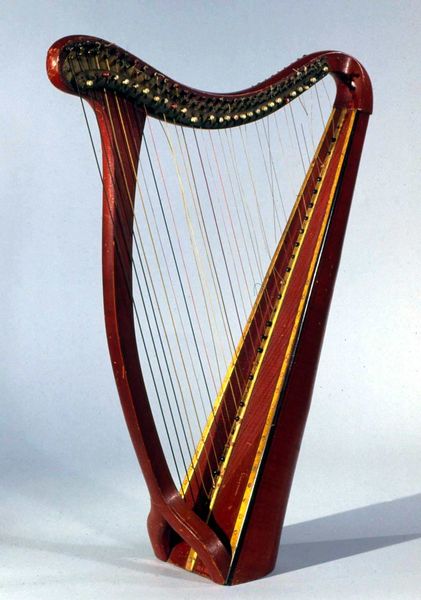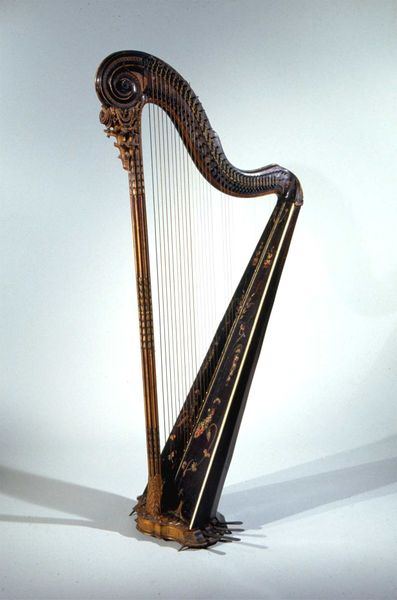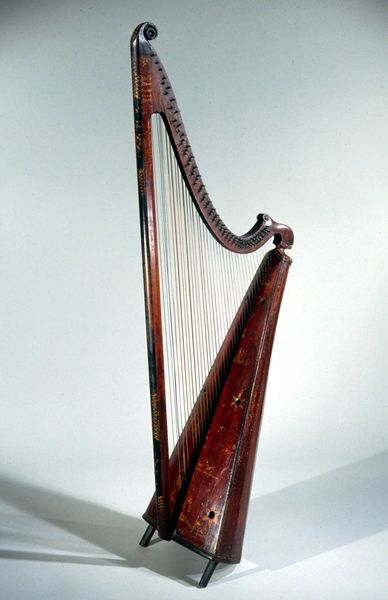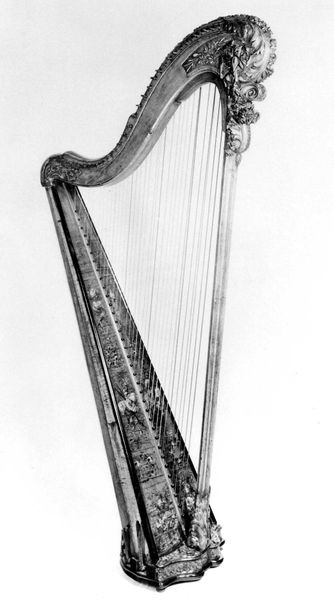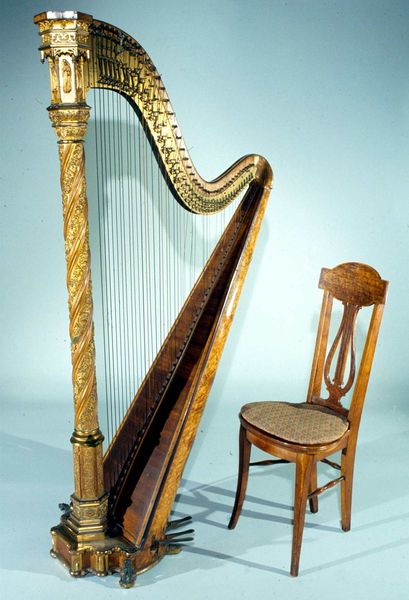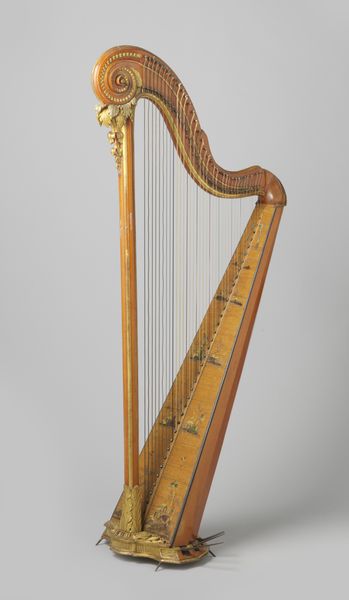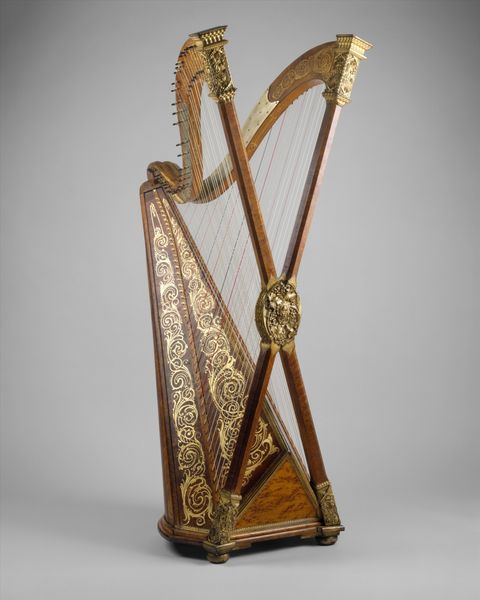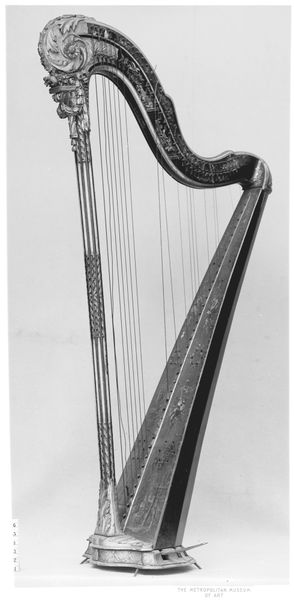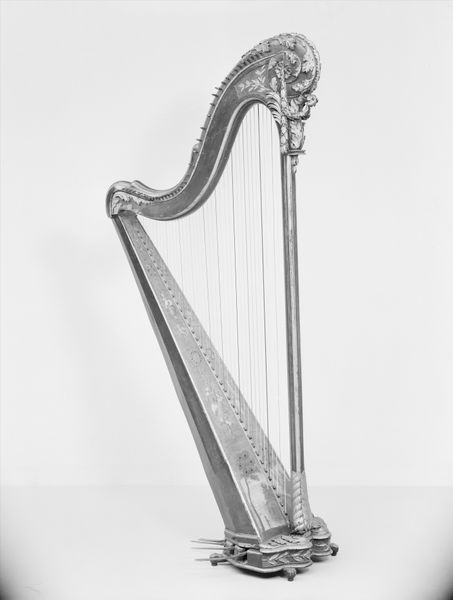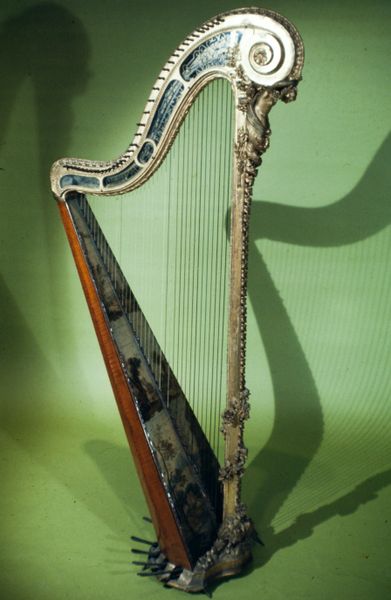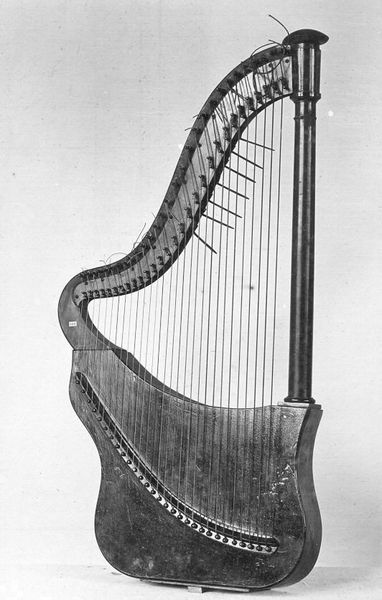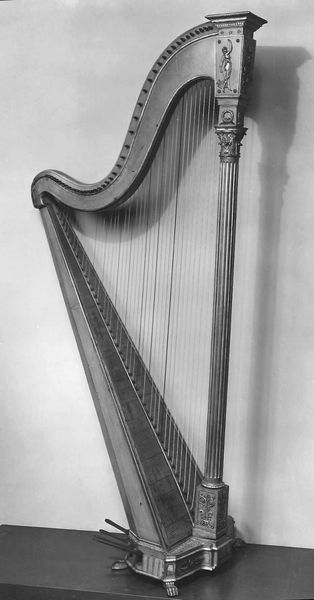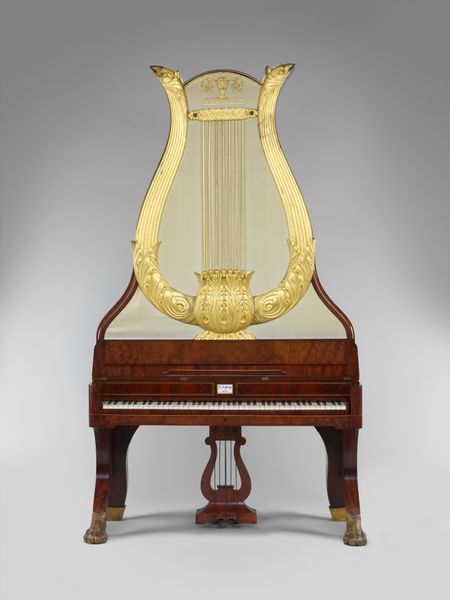
guilding, wood
#
sculpture
#
guilding
#
form
#
geometric
#
romanticism
#
line
#
wood
#
musical-instrument
#
decorative-art
Dimensions: Height: extreme 91.0 cm., Length of pillar 87.0 cm., Soundboard: resonating length 82.6 cm., greatest width 21.2 cm.; Strings: (sounding length) longest 87.0 cm. shortest 8.5 cm. c2 27.0 cm. Perpendicular to floor above soundboard 86.0 cm.
Copyright: Public Domain
Editor: This is the "Portable Harp" created in 1819 by John Egan. It is currently located at the Metropolitan Museum of Art, New York. It appears to be constructed of wood and features gilding. I’m immediately drawn to the level of detail; what stands out to you most about the harp? Curator: Considering it from a materialist perspective, the harp is fascinating. The choice of wood, likely a carefully selected variety for its acoustic properties, speaks to the primary function. But then, the gilding elevates it. Why gild an object primarily designed for music-making? What statement is being made through this extravagant application of precious metal to a functional object? Editor: So, it’s not just about the sound but about the status it projects. Almost as a display of wealth. Curator: Exactly! The gilding transforms the harp from a simple musical instrument into a symbol of luxury and social standing. The process of gilding itself is labor-intensive, which further emphasizes the value placed on this object and suggests the patron would be someone wealthy. How does that affect your understanding of the piece? Editor: It makes me wonder who owned it, and how often they would play it. Was it used daily or was it more for show? Would a musician play it for them, so their fingers would never have to get tired? Curator: An important point! The potential disconnect between the labor involved in creating the music versus owning the object adds another layer. Thinking about Romanticism as a movement, how does this opulent harp either conform or challenge those values, where nature was prized above artifice? Editor: I see what you mean. While the floral decorations evoke nature, the heavy gilding is pure artifice, celebrating the artificial, rather than nature. This piece really brings the historical period to life through the materials and their creation. Curator: Absolutely, analyzing the materials and methods used in the harp’s creation opens a window onto the social and economic context of its time, giving us insight into the society's values.
Comments
No comments
Be the first to comment and join the conversation on the ultimate creative platform.
